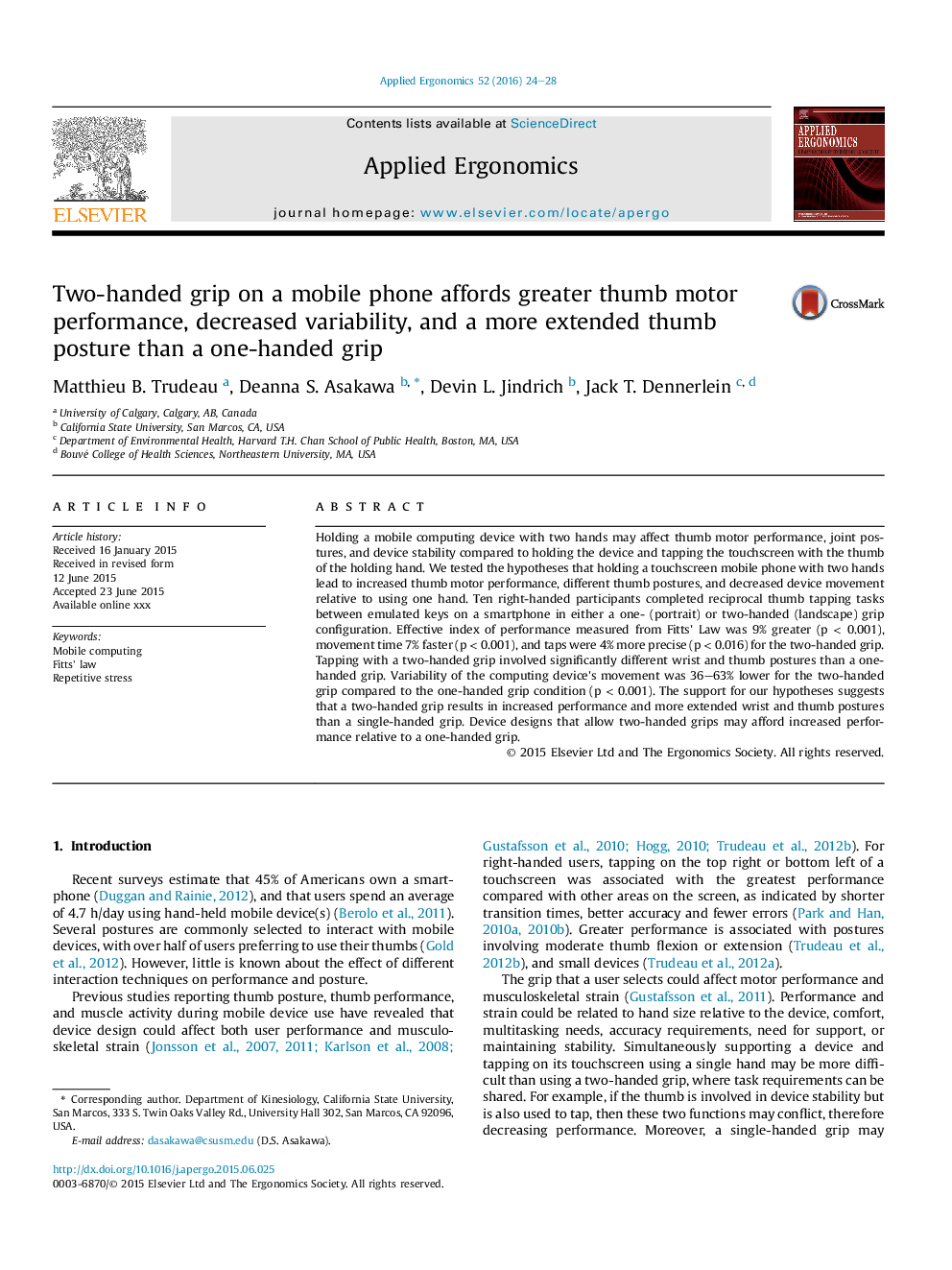| Article ID | Journal | Published Year | Pages | File Type |
|---|---|---|---|---|
| 6947915 | Applied Ergonomics | 2016 | 5 Pages |
Abstract
Holding a mobile computing device with two hands may affect thumb motor performance, joint postures, and device stability compared to holding the device and tapping the touchscreen with the thumb of the holding hand. We tested the hypotheses that holding a touchscreen mobile phone with two hands lead to increased thumb motor performance, different thumb postures, and decreased device movement relative to using one hand. Ten right-handed participants completed reciprocal thumb tapping tasks between emulated keys on a smartphone in either a one- (portrait) or two-handed (landscape) grip configuration. Effective index of performance measured from Fitts' Law was 9% greater (p < 0.001), movement time 7% faster (p < 0.001), and taps were 4% more precise (p < 0.016) for the two-handed grip. Tapping with a two-handed grip involved significantly different wrist and thumb postures than a one-handed grip. Variability of the computing device's movement was 36-63% lower for the two-handed grip compared to the one-handed grip condition (p < 0.001). The support for our hypotheses suggests that a two-handed grip results in increased performance and more extended wrist and thumb postures than a single-handed grip. Device designs that allow two-handed grips may afford increased performance relative to a one-handed grip.
Keywords
Related Topics
Physical Sciences and Engineering
Computer Science
Human-Computer Interaction
Authors
Matthieu B. Trudeau, Deanna S. Asakawa, Devin L. Jindrich, Jack T. Dennerlein,
